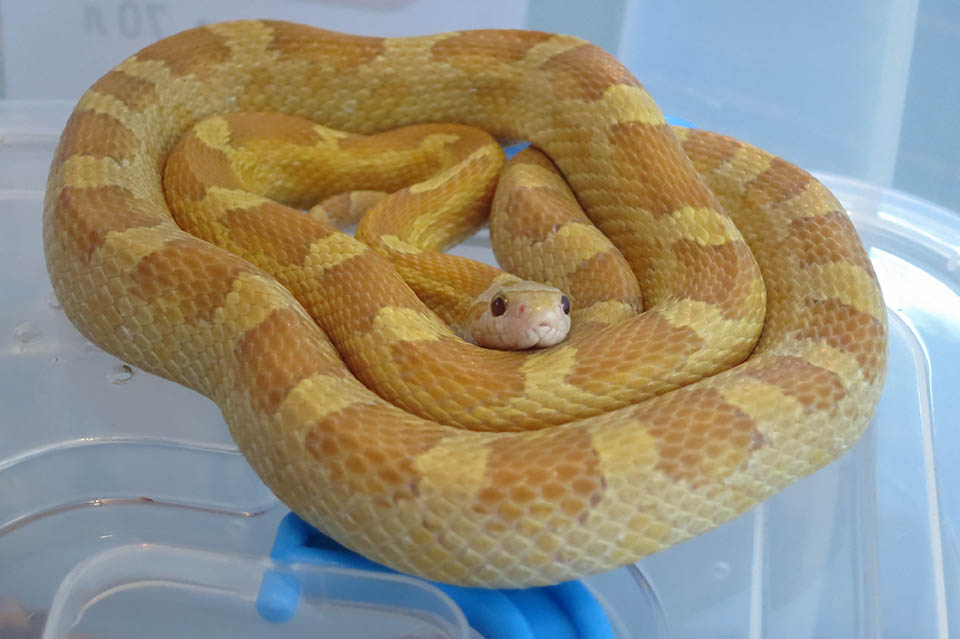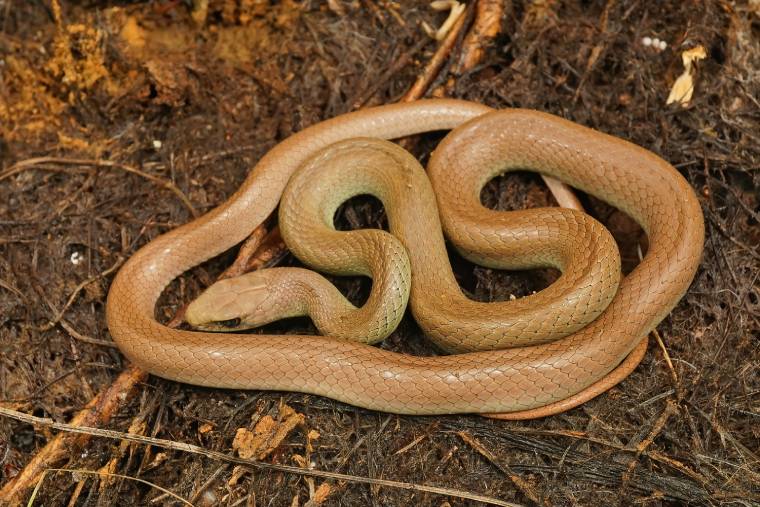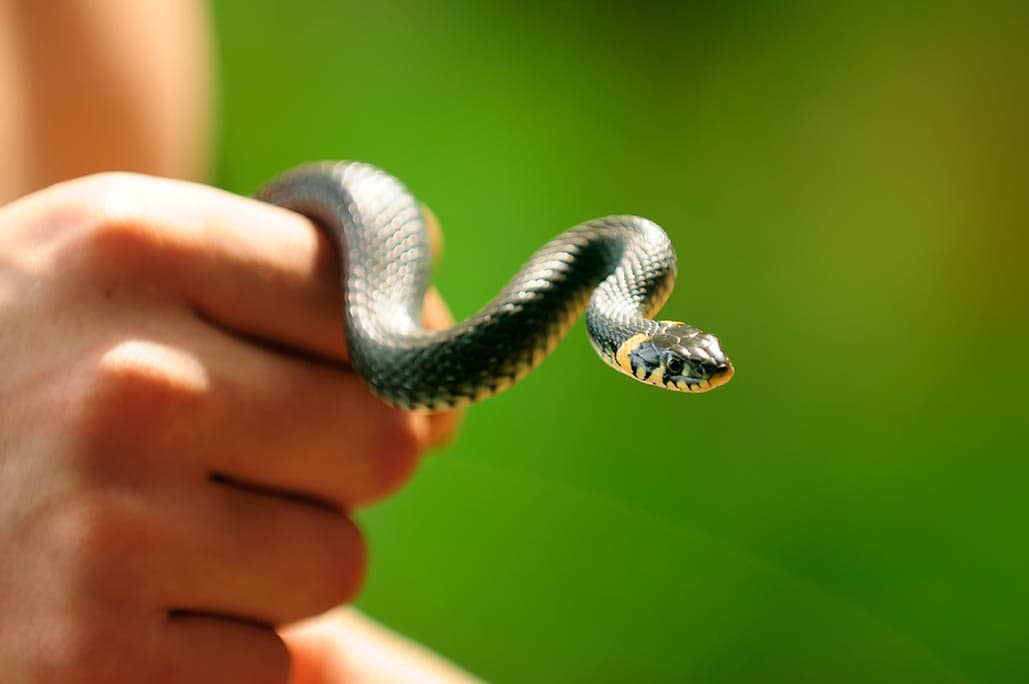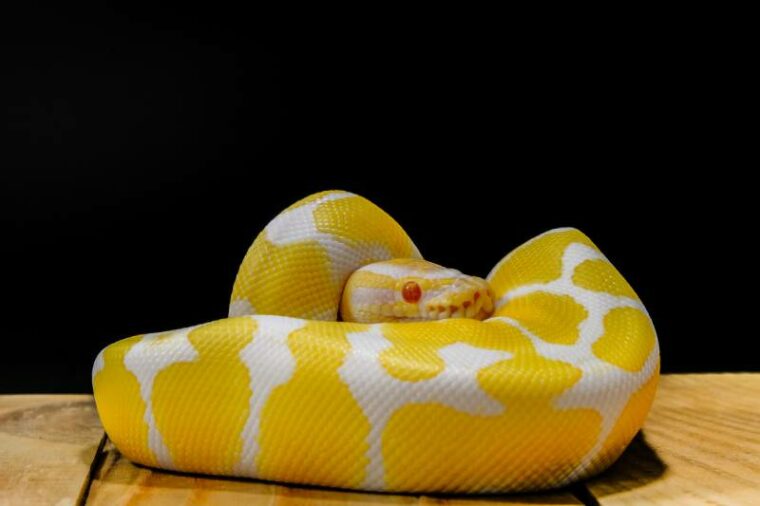
Click to Skip Ahead
Ball Pythons, which are also known as Royal Pythons in Europe, are semi-arboreal pythons that originate in the forests of Africa. They can grow to over 5 feet in length and while they are nocturnal or crepuscular, they can enjoy some time out of their cage during the day and they tend to take well to handling, which makes them a good choice of pet. They are not venomous and don’t have fangs, but they do have teeth and while it is rare, one might bite if startled or threatened.
They are considered good beginner snakes because they are docile and relatively easy to care for, but you will need to ensure you have all the appropriate supplies before you take delivery of your new pet snake. Below are the essential supplies that you will need.
The 11 Essential Ball Python Supplies
Please note that many states and jurisdictions may have legislation that prohibits owning, breeding, purchasing, or selling snakes or certain snake species. Always make sure you have permission to legally own an exotic pet before deciding to adopt one. If you are in the US, please refer to state laws before deciding to adopt an exotic pet. Elsewhere, please refer to the relevant laws where you reside.
Capturing wild animals to keep as pets is not advised, as this disrupts local ecosystems. Likewise, releasing exotic wild pets back into the wild is also not advised, as this too can disrupt the balance of local ecosystems.
Snakes are a long-term commitment and are generally not considered safe around children. They are also not compatible with other pets, including cats, dogs, birds, rabbits, and other exotic pets. They are opportunistic hunters that may attempt to strike or constrict anything they perceive as a potential meal, including their handlers.
Ball pythons are facing considerable habitat loss and capture for illegal pet trade, their skin, and traditional medicine practices. It is therefore important to ensure that a snake you choose to adopt has been hatched in captivity and ethically raised by a credible breeder.
Enclosure Supplies
1. Enclosure
There is a common misconception that ball pythons get stressed out with too much space. While they dislike too much open space, they do benefit from having a large enclosure with room to stretch out. Enclosures can be made of either glass or plastic, with each type having benefits and drawbacks.
The Repti Zoo Large Glass Reptile Terrarium is a 120-gallon glass enclosure, which provides ample space for even the biggest adult Ball Python. It has a raised base so you can use an under-tank heater and it has ventilation on the top and sides. Ventilation helps prevent mold and condensation and is an important aspect of enclosure management.
Please note that enclosures designed for land animals should not be used for holding water or housing aquatic animals, as the material might not be able to withstand the pressure exerted by water on its sides. Therefore, it might shatter at any point if filled with water to be used as an aquarium.
2. Heat Mat
Ball pythons, like most reptiles and snakes, need a gradient temperature within their enclosure. This enables them to move in and out of hot and cold areas to properly regulate their body temperatures. This can be provided through a combination of a basking lamp and an under-tank heat mat.
The Galapagos Geotherm Under Reptile Tank Heater adheres to the underside of the terrarium, so there is no chance of burns that can be caused by in-tank heat mats. It has an adjustable thermometer and is easy to use.
3. Basking Lamp
The temperature of your ball python’s enclosure needs to vary from around 77°F (25 °C) at the cool end to 86°F (30 °C) at the warm end of the tank. In addition, their basking spot should be around 90°F (30°C).
The Zoo Med Mini Deep Dome Lamp Fixture works with any compatible bulb. It can be used for UV lighting, which Ball Pythons don’t need, or it can be used to house a basking light to raise the temperature of the tank.
4. Digital Timer
The basking lamp and heat mat in your ball python’s enclosure need to be left on at all times to maintain the right temperature gradient. Ball pythons don’t strictly need UVB lighting, but many keepers do choose to offer UV lighting. If you do install a UVB light, you will need to ensure it is turned off at night so that you provide a proper day/night cycle. Manually switching the heater on and off is likely to lead to times when you forget, and this can be damaging for your snake.
The GE 7-Day Programmable Power Strip with Digital Timer is an 8-outlet power strip. Four of the outlets are always on, so suitable for the basking lamp and heat mat. The other four outlets are on a digital timer, which means you can set a UVB light to simulate a day/night cycle.
Environment Supplies
5. Substrate
Substrate is the material that sits at the bottom of the ball python’s enclosure. It helps keep the enclosure clean while also providing your python with an enriched environment. It needs to retain moisture to help maintain humidity levels while also offering burrowing opportunities for those ball pythons that do like to dig. It should also be relatively easy to clean, to make your life easier.
Exo Terra Coco Husk Tropical Terrarium Reptile Substrate is made from natural coconut husks. It retains a good amount of moisture, and it is soft enough to dig while being firm enough to maintain some shape.
6. Water Bowl
All living creatures need water to survive. Ball pythons can survive for a considerable time without drinking any water, but their health will start to suffer if they’re dehydrated, and a ball python can die if deprived of water. While ball pythons do absorb moisture through their skin and get some hydration from their prey, you do need to provide a water bowl.
The Zoo Med Repti Rock Reptile Water Dish is an extra-large water dish made from recycled plastic and styled to look like a natural rock. The interior is smooth so easy to clean, and the plastic is non-porous, which helps prevent bacteria buildup.
7. Hiding Spot
Ball pythons are naturally quite timid snakes, which means they need plenty of places to hide and take cover in their enclosure. This is why they can become stressed if they have too much open space in a large enclosure, and it is why you need to add at least one hiding spot (in the form of a hide) to the enclosure. Hides can also enhance the look of the enclosure from an aesthetic point of view.
The Repti Zoo 3-in-1 Magnetic Attraction Reptile Cave is a large hide made of resin. The inside of the cave can be used as a hide or for laying eggs, while the top of the fake rock also makes a good basking or resting spot.
8. Thermometer
To ensure that your ball python has ideal temperature conditions in their setup, you will need to routinely monitor the temperature using a thermometer. Because you need to know the temperature at both ends of the tank, a digital probe thermometer is a good option.
The Zoo Med Digital Thermometer is a probe thermometer, which means you can measure both ends of the tank whenever you like without the need to buy multiple thermometers. It’s easy to use and the LCD screen is easy to read. It’s also a really good price for a digital thermometer.
9. Hygrometer
Ball pythons need humidity to be between 50 to 80% and they benefit from higher humidity when shedding. Choosing the right substrate and misting regularly will help keep humidity levels up, but you will need to measure levels, so you know whether to increase or decrease existing rates. This is done using a hygrometer, which effectively measures the amount of hydration in the air.
Digital measurement is your best option when it comes to measuring humidity levels, too. The Zilla Thermometer-Hygrometer for Reptile Terrariums measures humidity between 30% and 90% so is ideal for a Ball Python’s enclosure. It also doubles up as a thermometer and comes with separate probes to take temperature and humidity readings.
Feeding Supplies
10. Calcium Supplement
Calcium is an essential part of your ball python’s diet, and it is beneficial to give supplementation every now and then to ensure that your snake is getting the desired levels.
Fluker’s Calcium with Vitamin D3 Indoor Reptile Supplement is a powdered supplement that contains both calcium and vitamin D3. You can sprinkle a little of the powder on your snake’s prey items to help maintain healthy muscles, nervous system, and digestion. But don’t feed too much or too often because too much calcium can prevent the ingestion of other important vitamins and minerals. It is best to consult your veterinarian before incorporating a supplement to your snake’s diet.
11. Frozen Rats
Ball pythons need to be fed rodents, and the size of the prey you give is determined by the size of the snake. Young pythons may only be able to manage mice of different sizes, but by the time your Python starts to mature, they will likely need to be fed rats.
MiceDirect Frozen Feeders Snake Food are 10 small frozen rats in a resealable bag so you can close the container and prevent spillage while in your freezer.
Are Ball Pythons Good Beginner Snakes?
Ball pythons are considered good beginner snakes because they are generally docile, and don’t usually bite. They are not venomous and don’t have fangs, so even if one does bite, it shouldn’t cause too serious an injury. However, they do benefit from having a lot of space, the enclosure needs regular cleaning, and you do need to feed mice or rats.
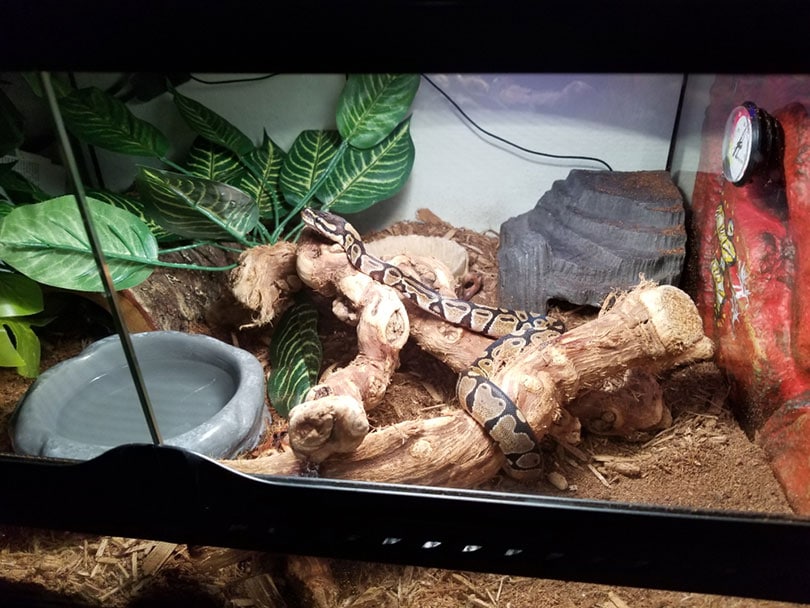
What Should a Ball Python Have in Their Tank?
As shy and somewhat timid snakes, ball pythons dislike large open spaces. This means that a ball python’s enclosure needs to contain plenty of enrichment items. At the very least, you will need a water bowl and two hides. You should also add substrate and include items like rocks, logs, and foliage so there are plenty of spots for your snake to hide and relax.
What Temperature and Humidity Do Ball Pythons Need?
Originating from the forests of Africa, ball pythons are used to high temperatures and humidity levels. The temperature in an enclosure should be a gradient with a cool end and a hotter end, with a basking area. Their temperature gradient should range from 77°F (25 °C) to 86°F (30 °C). In addition, their basking spot should be around 90°F (30°C). They require a humidity level of around 50-80%, with higher humidity required when they’re shedding.
How Big Should Ball Python Prey Be?
Generally, the size of the prey you feed to a ball python is determined by the snake’s size. Aim for a mouse or rat that is approximately the length of the midsection of the snake (measured across), or the size can be judged by the size of their head.
Although very young ball pythons can be fed some insects, ball pythons will generally live on a diet of mice, rats, or potentially other rodents. If you’re not keen on the idea of feeding rodents to your snake, you should consider a different species.

How Much Does a Ball Python Eat?
How often you need to feed a ball python depends primarily on their age. Juveniles eat every week, initially, gradually reducing this to every fortnight. Young adults eat every 2–3 weeks and adults will eat every month to 6 weeks.
Summary
Ball pythons are popular snake pets because they are docile, manageable, and they tolerate being handled. They do need quite a lot of space, however, and they need an enclosure filled with items that offer enrichment. Above, we have listed essential supplies, which include some of the food you will need for the first few weeks of owning a Ball python.
Featured Image Credit: Creative Stock Studio, Shutterstock
















